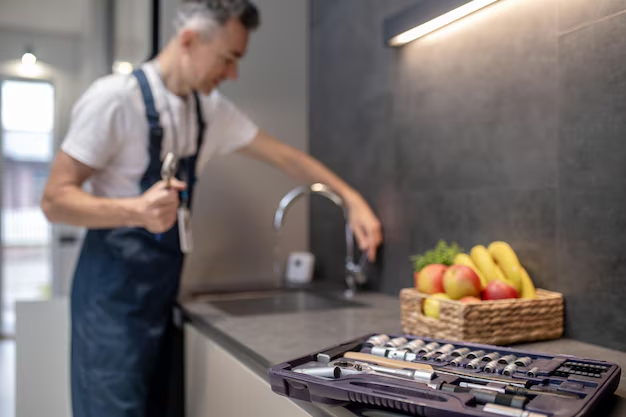How to Efficiently Reset Your GE Profile Refrigerator for Optimal Performance
Imagine the convenience of a refrigerator that adjusts perfectly to your needs, maintaining ideal temperatures and ensuring your groceries stay fresh longer. But what happens if your GE Profile refrigerator starts behaving erratically or shows an error? Understanding how to reset your GE Profile refrigerator effectively can solve many common issues, from cooling problems to pesky error messages. Let's delve into the process and explore the broader landscape of GE Profile's controls and settings.
🌟 Why Reset Your GE Profile Refrigerator?
Resetting Your GE Profile Refrigerator is akin to rebooting a computer. It helps resolve:
- Malfunctions: Minor issues or glitches that might have developed over time.
- Error Codes: Clear confusing error messages that can sometimes appear on the display.
- Temperature Fluctuations: Stabilize temperature settings if your fridge isn't as cool as it should be.
- New Settings or Installations: Implement new configurations if you've recently adjusted settings or installed new components.
To thoroughly understand when and why to reset your refrigerator, let's explore the signs indicating it might be time for a reset.
🚨 When Is It Time to Reset?
Recognizing the signs that point towards the need for a reset can save both time and resources. Here are common indicators:
Irregular Cooling:
- Your fridge or freezer is not reaching the preset temperature.
Flashing Error Codes:
- Mysterious codes on your digital display that disrupt normal operations.
Unresponsive Controls:
- Button presses that seem ignored or settings that don't hold.
Ice Maker Problems:
- Issues like not making enough ice or overflowing can be mitigated by a reset.
After Power Outages:
- Power surges or outages often necessitate a reset to recalibrate functions.
🔧 Step-by-Step Guide to Resetting Your GE Profile Refrigerator
Resetting your refrigerator can seem daunting, but it's straightforward when broken down. Here's a step-by-step guide:
Step 1: Prepare for Reset
- Unplug the Unit: Ensure safety by disconnecting your fridge from the power source.
- Wait Patiently: Let it sit unplugged for at least 5 minutes. This allows the internal system to fully shut down.
Step 2: Reboot the System
- Reconnect: Plug your refrigerator back into the power outlet.
- Allow Initialization: Give your fridge time to reboot its systems, a process that might take a few minutes.
Step 3: Verify Settings and Functionality
- Check Temperature: Ensure the cooling has reset to desired settings.
- Monitor for Codes: Verify that error codes have disappeared or are no longer flashing.
- Test Controls: Test functions to confirm buttons and settings are operational.
Step 4: Observe Performance
- Initial Monitoring: Over the next 24 hours, keep an eye on temperatures and functionality.
- Look for Recurring Issues: If problems persist, there might be a need to consult a professional for more in-depth troubleshooting.
🛠️ Advanced Troubleshooting Techniques
If a simple reset doesn't fix the problem, more advanced troubleshooting might be necessary. Here are some steps to explore:
Investigate Power Source
- Circuit Breakers: Ensure the circuit hasn't tripped and that power supply is stable.
- Outlet Health: Test the electrical outlet with another device to ensure it carries power.
Inspect Components
- Condenser Coils: Dirty coils can impact performance. Ensure they're clean for efficient operation.
- Door Seals: Loose or damaged seals can cause cold air loss, affecting cooling efficiency.
Software Errors
- Firmware Updates: Some refrigerators might require firmware updates to solve recurring or reported errors.
Hardware Inspection
- Professional Help: For internal issues like compressor problems, consult professional appliance technicians.
🔍 Understanding Your GE Profile Settings
Understanding the controls and settings of your GE Profile refrigerator can enhance its longevity and maintenance.
Temperature Settings
- Optimal Ranges: Usually, the fridge should be set to around 37°F and the freezer to 0°F for optimal performance.
- Customizable Features: Some models allow for digital fine-tuning of temperature settings based on your needs.
Energy Efficiency Modes
- Sabbath Mode: Useful for conserving energy during certain times.
- Energy Saver: Automatically adjusts energy consumption, beneficial during less active periods.
Diagnostic Tools
- Self-Diagnostic Mode: Many GE models include a diagnostics mode accessible through the control panel. This can be very useful for pinpointing specific issues.
🤓 Expert Tips for Maximizing Your Refrigerator’s Lifespan
Besides resetting, maintaining your refrigerator is instrumental in ensuring its longevity and efficiency. Here are some expert tips:
- Regular Cleaning: Keep condenser coils and internal compartments clean.
- Door Management: Avoid leaving the door open, and ensure it's fully sealed.
- Check for Obstructions: Ensure vents inside the fridge are free from blockages, allowing proper air circulation.
- Periodic Professional Check-ups: Consider having a professional review the appliance annually to catch potential issues early.
📝 Visual Summary: Key Steps & Considerations
Quick Reset Steps:
- 🔌 Unplug the Refrigerator: Disconnect from power for 5 minutes.
- 🔄 Replug and Restart: Let systems recalibrate upon reconnection.
- 📋 Verify and Adjust Settings: Ensure everything is set correctly.
Common Indicators for Reset:
- 🌡️ Temperature inconsistencies
- ❌ Error codes displayed
- 🎛️ Non-responsive controls
Additional Maintenance Tips:
- 🧼 Regular component cleaning
- 🏡 Ensure proper ventilation around the unit
- 🤝 Professional maintenance annually
Whether your GE Profile refrigerator is showing signs of distress or simply requires a calm occasional 'restart,' understanding the process is vital. Such know-how not only helps resolve existing issues but also potentially averts future complications, keeping your appliances in peak operational mode. With the right balance of resetting skills and regular maintenance, your GE Profile refrigerator can run smoothly, enjoying an extended, trouble-free life. Understanding these facets empowers you to manage and maintain your appliance effectively, leading to better performance and longevity.
